Hundreds of science fiction films were made during the genre's great flourishing in the 1950s. The all-time classics among them include The Day the Earth Stood Still (1951), The Thing from Another World (1951), The War of the Worlds (1953), The Creature from the Black Lagoon (1954), and Forbidden Planet (1956). This expanding article will list overlooked and underrated gems of the era.
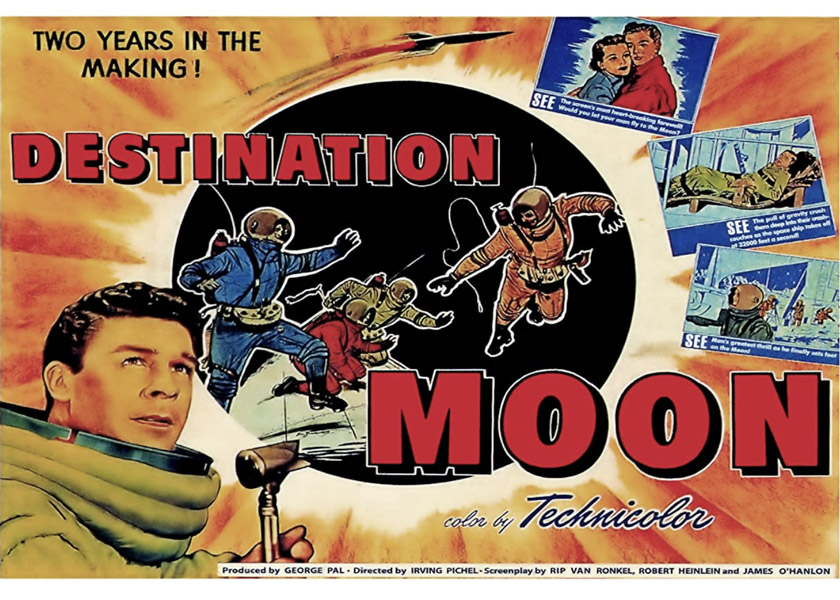
Destination Moon
The first science fiction film of the 1950s is a semi-documentary style story of a rocketship that successfully carries four men to the moon and back to Earth again. The color photography enhances views of the rocketship in space surrounded by stars, Earth and moon as seen from the ship, and the surface of the moon. The straightforward style reduces melodrama; untoward events occur, but the characters mostly remain realistically calm and steady. Only Dick Wesson’s comical character is unnecessarily exaggerated, but he is not overly intrusive.
Robert Heinlein, who co-wrote the script, attempted to maintain technical accuracy in every aspect of the planning, building, and journeying of the rocket and its crew. nThis film is an appropriate initial entry into the sceince fiction genre of the 1950s. The audience is presented with an accurate and mostly unmelodramatic story of space travel. Later productions could bulid on this story, adding imaginative and more exaggerated plot elements.
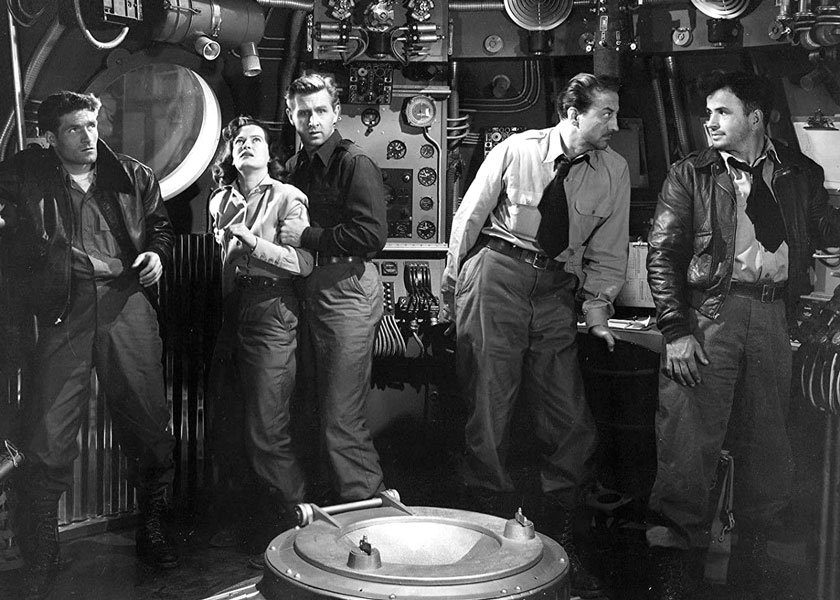
Rocketship X-M
Produced in competition with the glossy Destination Moon (1950), the low-budget Rocketship X-M (1950) jettisons most of the former film's scientific accuracy in favor of an eerie and surprisingly dark story of the first exploration of a blasted, post-apocalyptic Mars. Directed by Kurt Nuemann, who would later carve out a small place in science-fiction history with The Fly (1958), Rocketship X-M makes clever use of Death Valley National Park to simulate Mars’ hellish landscape, and weaves Nuclear Age fear into its story of a great civilization reverted to barbarism following atomic war.
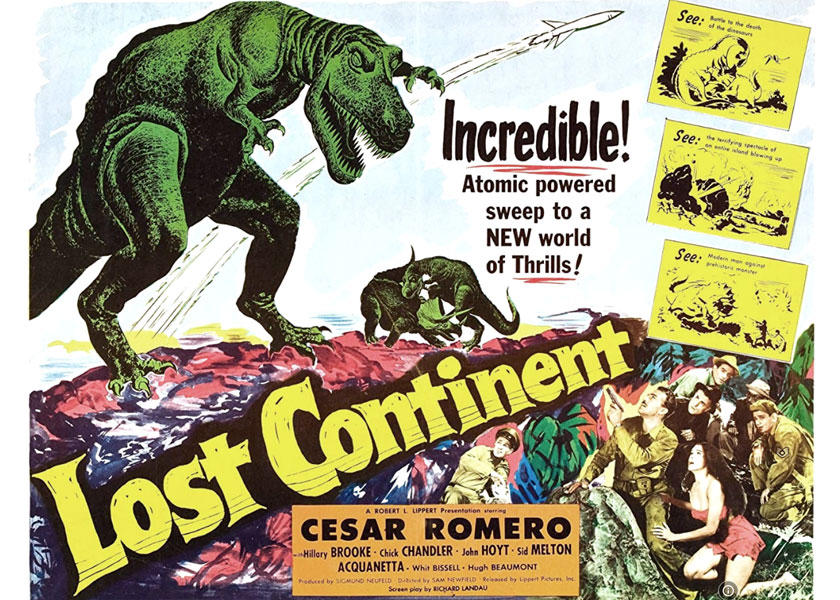
Lost Continent
A top-secret rocket is launched. It veers off course and disappears over the Pacific. Six men embark in a DC-3 to track down the errant missile. Three (Cesar Romero, Chick Chandler, and Sid Melton) are Air Force personnel; the others (Hugh Beaumont, John Hoyt, and Whit Bissell) are civilian scientists. Miraculously, they locate the rocket! It has crash landed on top of a mountain on a mysterious island. They land on the island, trek to the top of the mountain, and there discover … a Lost Continent! (Really, it’s more like a Lost Plateau). When this film was released for television in the mid-1950s I watched it multiple times on our small-screen black-and-white TV. I enjoyed it immensely! After all these years, and despite its far-fetched story and cheesy special effects, it’s still lots of fun to watch.
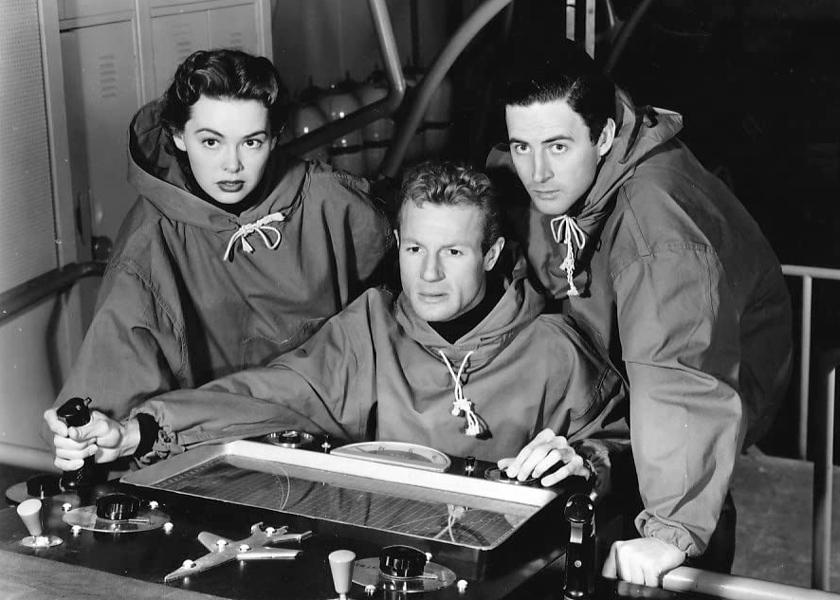
When Worlds Collide
Earth-shattering events precede the approach of two rogue planets. Although one planet will pass Earth, the other is on a path to an Earth-destroying collison. Although world governments scorn the scientist predicting this event, one group of believers build a space ship that carries a few young people to the surviving planet.
Although the Earth and its inhabitants were frequently threatened with destruction in 1950s science fiction films, this film may be the only one in which total destruction actually occurs. The grimness of the situation and the pressure of finishing the rocketship on time are sustained throughout the film, despite the use of stock shots for scenes of calamity and relatively inexpensive sets for the rocket building scenes. Producer George Pal would have bigger budgets and better-known casts for his subsequent science fiction films War of the Worlds (1954) and The Time Machine (1960), but this early film delivers a similar punch.
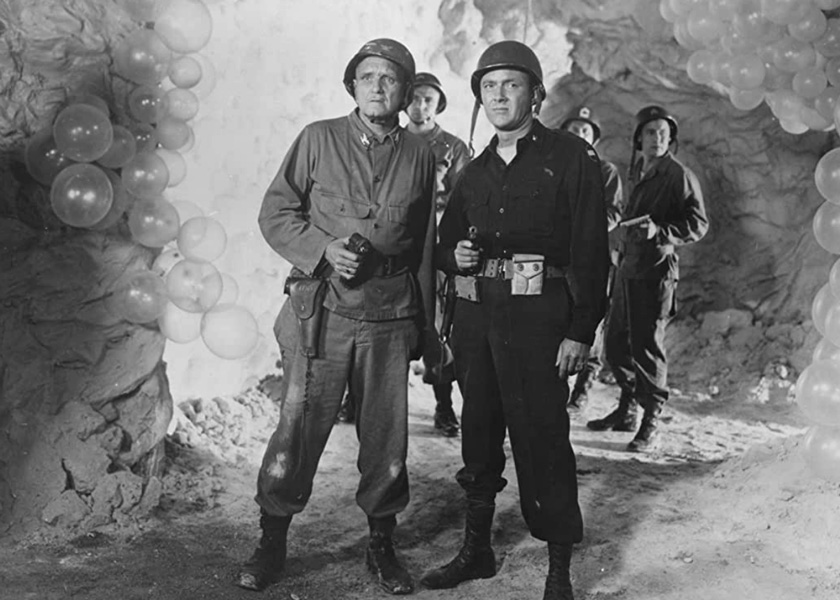
Invaders from Mars
From his bedroom, a boy sees a strange object land in a nearby field and disappear into the ground. The object is a Martian spacecraft. Soon, people begin to fall into the sand pit. They reappear with an implantation at the base of the skull that induces robotic obedience to the Martians. The boy’s own parents are taken over. Scientists and soldiers at a near-by federal installation realize the danger and attack the Martians whose leader is a head enclosed in glass.
One of the most interesting and unusual sci fi films of the 1950s is plotted and designed in the form of a child’s nightmare. Whether the entire story is only the boy’s bad dream or whether he is actually living the events is never made clear.

It Came From Outer Space
A first meeting between humans and beings from outer space occurs after the aliens’ spaceship has crashed in the desert near a small town. The peaceful aliens only want to repair their ship and depart. Richard Carlson, a local astronomer, meets the aliens and tries to prevent contact between the locals and the space travelers. The landing of a space craft and the alarming physical form of its occupants could frighten the locals into violence against them. Carlson enlists the sheriff in helping him protect the aliens until they have repaired their craft. The sheriff fears the aliens and isn’t too sure he wants to help them.
Richard Carlson, the star of several science fiction films, projected steadiness, dependability and reassurance in the face of multiple threats. The unsettling atmosphere of the vast, open desert is a perfect backdrop to the eerie presence of the mysterious, seemingly threatening space travelers.
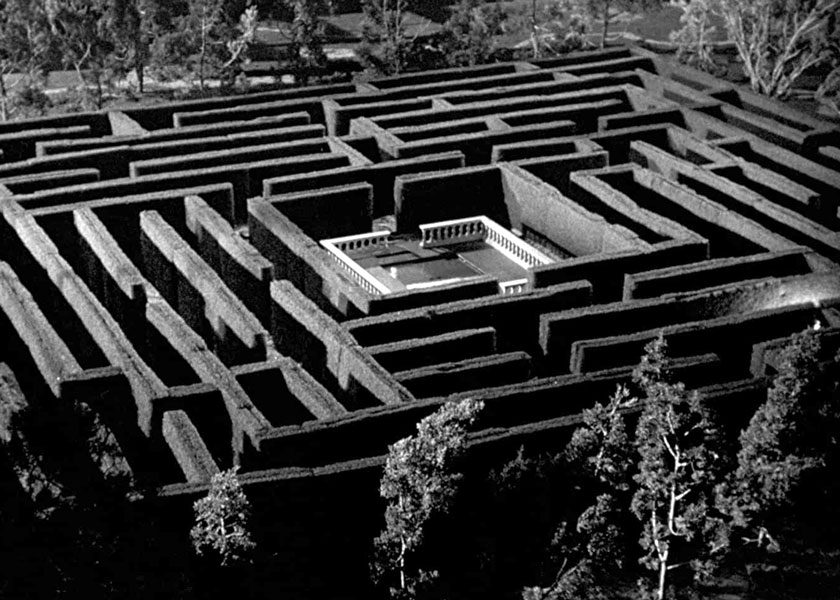
The Maze
The Maze (1953) is the least-known of the three science-fiction films (including Things to Come and Invaders from Mars) directed by legendary production designer William Cameron Menzies. Mixing gothic horror with science-fiction and fantasy, Menzies imbues The Maze with the same claustrophobia and surrealism of his classic Invaders. Richard Carlson, a stalwart actor of the sci-fi genre, gives a fine performance as a man who abruptly departs his normal life to tend to his late uncle’s castle in Scotland, and the bizarre terms of his inheritance.
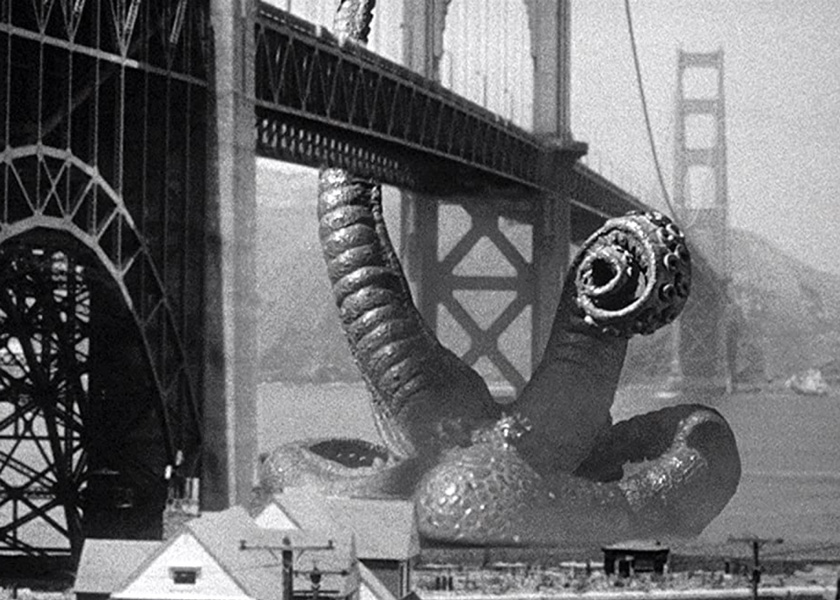
It Came From Beneath the Sea
In the 1950s, familiar creatures grown to gigantic size threatened mankind on land (ants in Them! (1954), spiders in Tarantula (1955)) and sea (caterpillar-like sea snails in The Monster That Challenged The World (1957), crabs in Attack of the Crab Monsters (1957)). In 1955, a giant octopus comes from beneath the sea to wreak havoc not only on ships but also on people and structures on dry land. The enormous arms of the octopus reach down the streets of San Francisco to seize its terrified victims. Even the Golden Gate Bridge is attacked. Drivers flee their cars as the bridge is ripped apart. It takes an atomic torpedo to kill this monster. Famed special-effects expert Ray Harryhausen created and animated the believeable-looking octopus. To cut costs and make the model easier to move, Harryhausen built his octopus with only six arms. After all, whose counting?

This Island Earth
Metaluna, a planet distant from Earth, is being destroyed by invaders from a neighboring, hostile planet. A Metalunan, Exeter (Jeff Morrow), has come to Earth to recruit scientists to aid in the defense of his planet. He deceives physicists Rex Reason and Faith Domerque and abducts them. Back on Metaluna, Exeter realizes that the planet is doomed and endeavors to safely return the scientists to Earth.
This film is decent, quite interesting, and takes the material seriously. It has a fairly ambitious third act, presenting the apocalypse of an alien civilization, and a nice semi-tragic ending. It might be most widely known as the movie lampooned in Mystery Science Theatre 3000: The Movie.
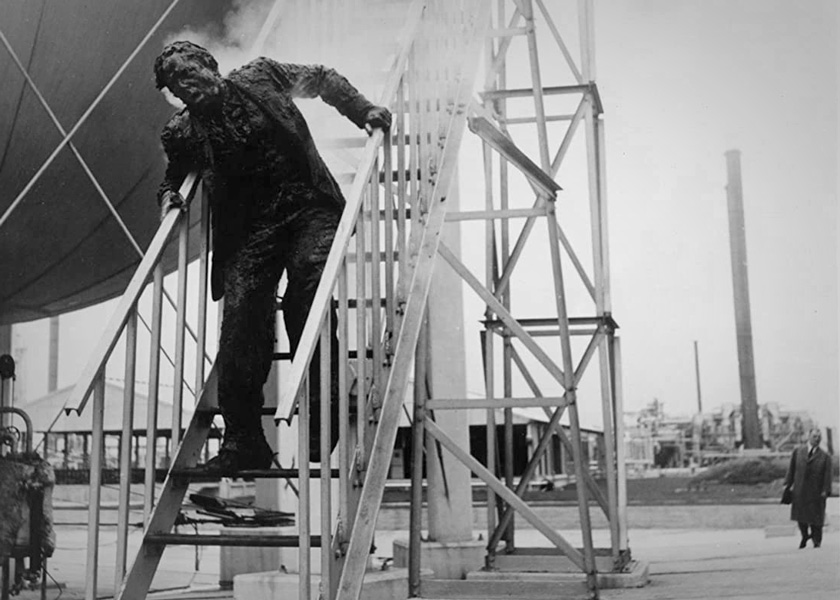
Quatermass 2
Memorable, chilling, and surprisingly grisly sequences abound in the excellent Quatermass 2 (1957), arguably the best science-fiction film of the 1950s. The follow-up to the classic The Quatermass Xperiment (1955), also produced by Hammer Films and directed by Val Guest, Quatermass 2 bears interesting similarities to another outstanding genre sequel, James Cameron’s Aliens (1986). Both films change the formula of their predecessors by greatly increasing the number of hostile aliens and mixing large-scale action sequences with science-fiction and horror elements. Quatermass 2 finds the intrepid Professor Bernard Quatermass, played with appealing forcefulness by Brian Donlevy, investigating a bizarre and secretive facility supposedly producing synthetic food, but which bears a striking resemblance to his own designs for a lunar colony. What he discovers is a large-scale invasion of symbiotic aliens multiplying in alarming numbers via human hosts. And as Ripley and the Colonial Marines would discover many years later, this type of infestation is best dispatched with guns, explosions, and, just to be sure, nukes.

I Married a Monster from Outer Space
On the eve of his wedding, Tom Tyron is wrapped in a strange, white cloud and replaced by a being who assumes his form. After the wedding, Gloria Talbot is puzzled that her loving fiancé has become a cold and distant husband. A year later the couple has not conceived a child. Gloria learns that her human husband has been replaced by an alien who is hoping to have a child with the human female. Many other men in her town have also been replaced. Removing the aliens involves solving the difficulty of distinguishing the actual humans from the disguised aliens.
This effective low budget movie has an interesting premise similar to the plot line of Invasion of the Body Snatchers. Youthful Gloria Talbot is sympathetic as the innocent and loving newly wed whose husband has so inexplicably changed. The overly sensationalized title is part of the movie’s charm.
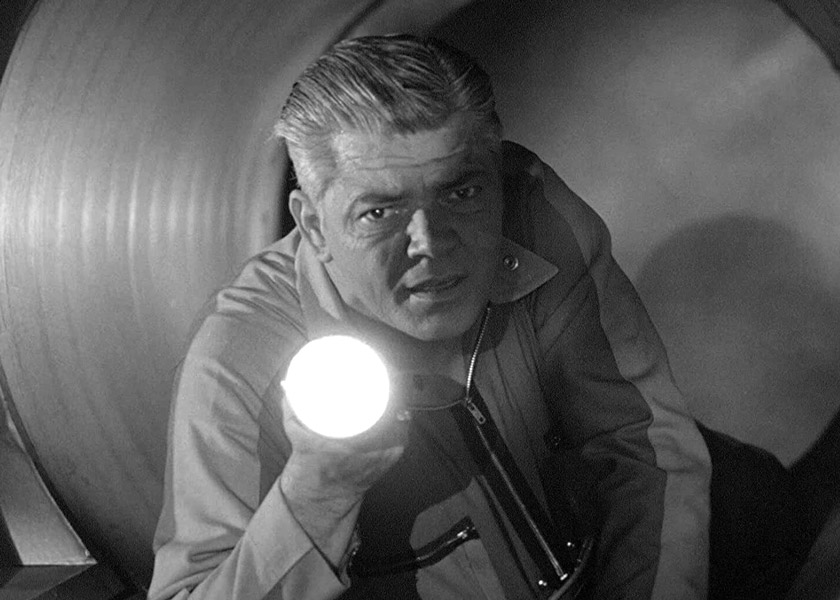
It! The Terror from Beyond Space
Little more than an hour long, the minimally budgeted It! The Terror from Beyond Space (1958) is an effectively concise and minimalistic blending of horror and science fiction that that heavily influenced Alien (1979) and resembles the slasher genre of the 1980s. The plot follows a spaceship crew as they use improvised weapons, vents and the ships airlock to battle a hostile and seemingly invincible alien intruder. It! makes effective use of its small number of claustrophobic sets with shadows and high-contrast lighting. Features the final screen performance of Ray Corrigan as the titular terror.
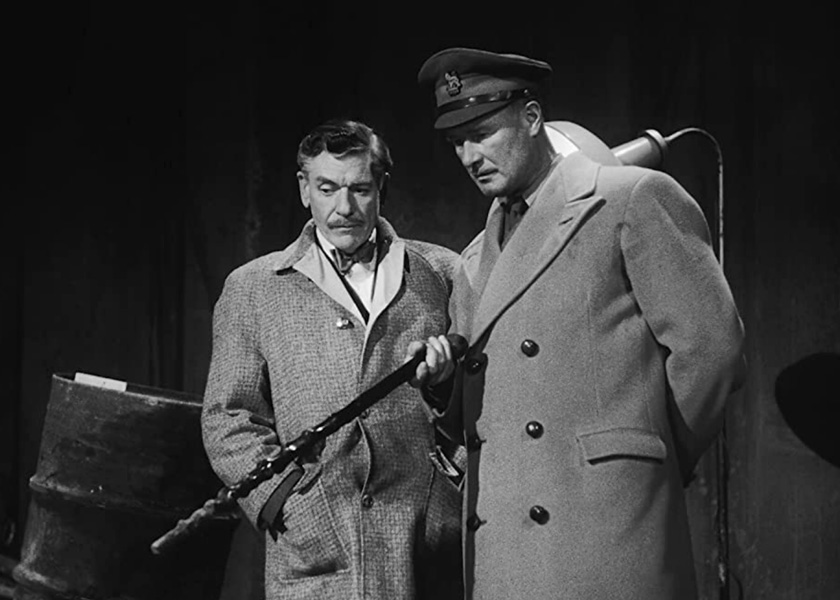
Quatermass and the Pit
The discovery of a capsule buried on a London street initiates a mystery that becomes ever more complex and compelling as the pit is enlarged, and the capsule is fully exposed. Forces released from the capsule trigger ancient memories in the people of London who collectively respond by reenacting events that occurred millions of years earlier on Mars.
A late, and one of the finest, science fiction productions of the 1950s is not a film, but a six-part televsion serial made for the BBC. As a television presentation, the production is inexpensively made and entirely studio bound, but these are minor, unimportant issues. This Professor Quatermass story is enthralling and builds to a surprising and thrilling climax. Nigel Kneale, who conceived Professor Quatermass, came up with the ultimate story of interaction between humans and Martians.
